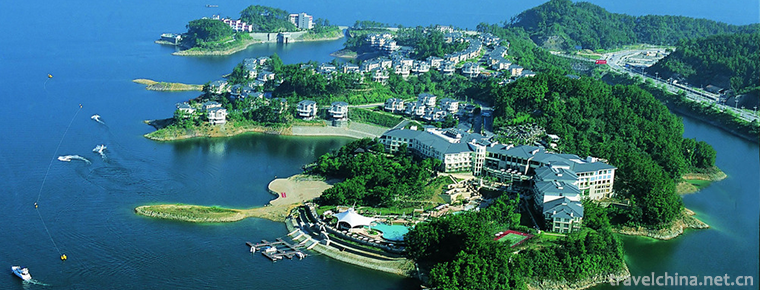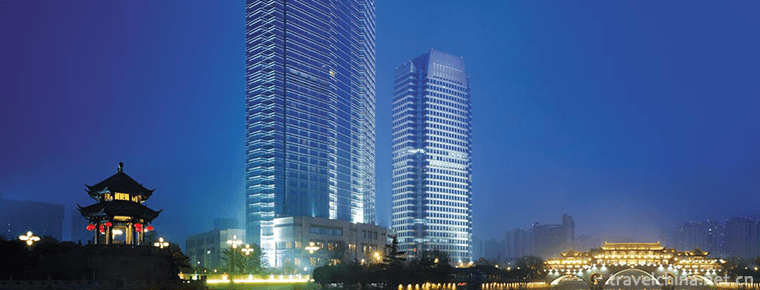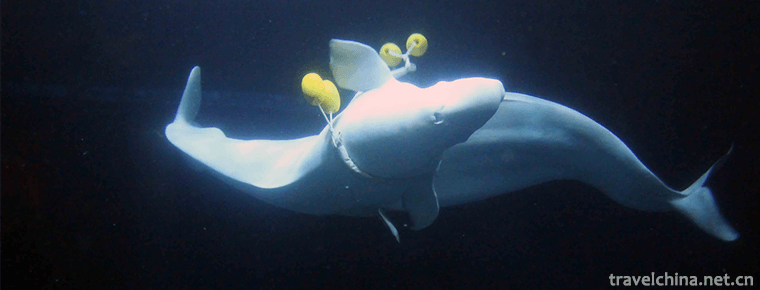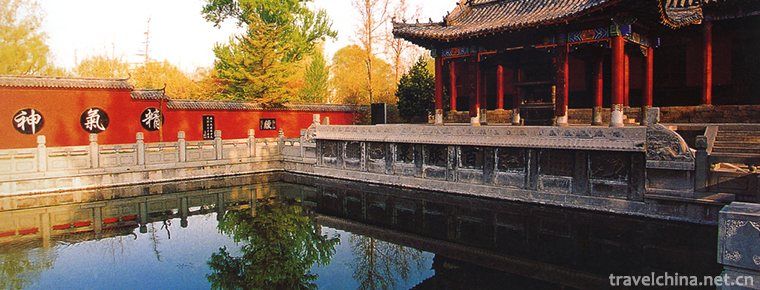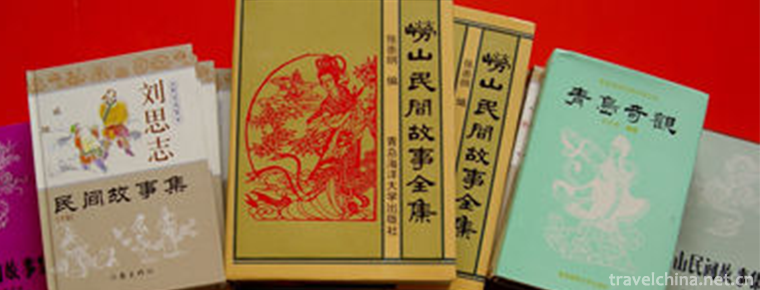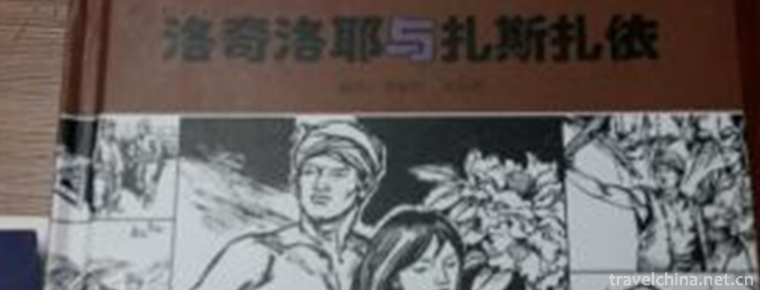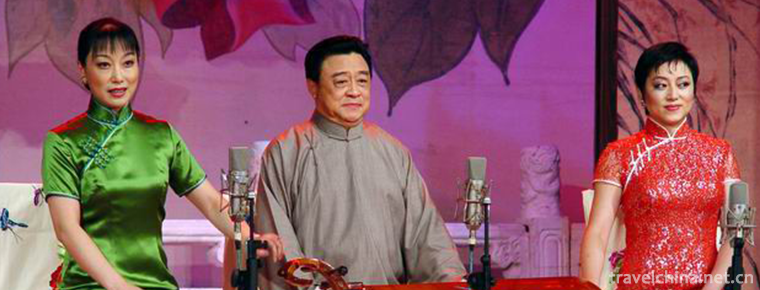Site of Xanadu
The site of Shangdu in Yuan Dynasty is located in Zhenglanqi grassland of Xilingol League, Inner Mongolia Autonomous Region. It was once the capital of the largest empire Yuan Dynasty in the world history. It was founded in 1256 A.D. It was the birthplace of the Chinese Dayuan Dynasty and the Mongolian Yuan culture, where Kublai Khan ascended the throne to establish the Yuan Dynasty.
Shangdu in the Yuan Dynasty is on the south of Shangdu River and on the north of Longgang Mountain, surrounded by the vast Jinlianchuan grassland, which forms a hierarchical and radial distribution with palace sites as the center, i.e. palaces and temples with civil buildings as the main part, as well as the general planning form of Mongolian yurt-style buildings with nomadic tradition. It reflects the magnificent style of a highly prosperous grassland capital city and is agricultural civilization and nomadic literature. The integration of Ming Dynasty is an outstanding example of the integration of grassland culture and farming culture in the Central Plains.
In 1988, it was listed in the third batch of national key cultural relics protection units. On June 29, 2012, the 36th World Heritage Congress officially announced in St. Petersburg, Russia that the site of the Chinese Yuan Shangdu was included in the World Heritage List.
Evolution of construction
According to historical records, Shanrong and Donghu people first entered the upper reaches of Luanhe River.
In the third century AD, the queen of Donghu was divided into two branches, Xianbei and Wuhuan, where the capital of Yuan Dynasty was located.
After the 4th century AD, Tuoba Xianbei rose and established the Northern Wei Dynasty. The capital of the Yuan Dynasty was located in the pasture land outside the Great Wall of the Northern Wei Dynasty.
In the tenth century AD, Liao and Jin dynasties took this place as a good place for hunting and traveling.
In the fourth year of Qiandao in Southern Song Dynasty (1168), Wanyan Yong of Jin Shizong named it Jinlianchuan, which is the meaning of "Lianyi Lianyi, taking its gold branches and jade leaves to connect".
In the fourth year of Jiading in Southern Song Dynasty (1211), Genghis Khan led Mongolian cavalry to collect money southward, occupied Huanzhou in the upper reaches of Luanhe River, and Jinlianchuan became Genghis Khan's summer resort.
In the eighth year of Jiading in Southern Song Dynasty (1215), Genghis Khan took Lianglong in Huanzhou as his "summer palace". When Genghis Khan divided the generals, the upper capital area of Yuan Dynasty was the hereditary territory of Muhuali family.
In the forty-ninth year of Jiading in Southern Song Dynasty (1256-1258), Kublai Khan ordered his close minister, Monk Zicong (Liu Bingzhong), to build a city in Longgang, east of Huanzhou City and north of Luanshui River, named Kaiping. After Kublai Khan came to power and established the Central Unity of the Yuan Dynasty, Kaiping Prefecture was continuously expanded and renovated.
In the fourth year of the Yuan Dynasty (1263), Zhongtong was upgraded to the capital, named Shangdu.
From the Yuan Dynasty to the eighth year of the Yuan Dynasty (1271), Kublai Khan designated the country as "Yuan". Shangdu and Dadu became two capitals alternately used by the Yuan Dynasty. They experienced 11 emperors for 108 years. Up to the end of the Yuan Dynasty, it was always the political, economic, military and cultural center of the Yuan Dynasty. At the beginning of Ming Dynasty, Kaiping Wei was established in Ming Dynasty, and the city was abandoned when Xuande migrated to the south. Since then, it has become a ruin after a long period of uninhabited.
In 1996, the Yuanshangdu site was listed in the preliminary list of World Heritage declarations for the first time in China.
In 1999, the state invested 1 million yuan to relocate 103 workers from the "May 1 Animal Farm" and enclose the site.
In 2002, the Inner Mongolia Autonomous Region restored more than 300 meters of the imperial city wall at the site of Yuanshangdu, filled in the vegetable cellars, artificial canals and other facilities, and closed the roads in the site.
In 2006, the Shangdu Site of the Yuan Dynasty was once again included in the reset Preparatory List.
In 2008, the application for the heritage entered the substantive operation stage.
In 2009, the Autonomous Region set up a Leading Group on the Work of Applying for the Heritage, headed by the then Chairman of the Inner Mongolia Autonomous Region Government, Bartel, and the work of applying for the Heritage entered a critical stage.
In January 2010, in order to restore the original ecological environment of the Yuanshangdu site, strengthen the environmental management and protection of the site, and promote the process of declaring the world cultural heritage of the Yuanshangdu site, the government established the Yuanshangdu site nature reserve, and determined 1814.52 square kilometres to be the Yuanshangdu site site application protection area, of which 34342 hectares were declared area and 147110 hectares were buffer area. Wetlands, grasslands and forests around the main body of the Yuanshangdu site have been included in the scope of the Yuanshangdu site heritage protection area.
In 2011, a series of protection laws and regulations were formulated, such as the General Plan for the Protection of Yuanshangdu Sites, the Measures for the Protection and Management of Yuanshangdu Sites, and the Plan for the Protection of the Ecological Environment and Characteristic Landscape of Yuanshangdu Sites. The Yuanshangdu Site Museum Project, which invests more than 6 million yuan, will be officially opened to tourists on July 15, 2011. In August 2011, in accordance with the requirements of the Convention for the Protection of World Cultural and Natural Heritage and the Operational Guidelines for the Implementation of the World Heritage Convention, United Nations experts conducted field visits and assessments on the heritage value, protection and management of the Yuanshangdu site.
In May 2012, the World Heritage Center issued an official report, which adopted the statement on the outstanding universal value of the heritage in the application text. The authenticity, integrity and protection and management status of the heritage fully meet the requirements of the World Heritage. Yuanshangdu Site was nominated for inclusion in the World Cultural Heritage. At the 36th World Heritage Committee meeting held in St. Petersburg, Russia, on 29 June, it was unanimously agreed that the Yuanshangdu Site, a cultural heritage project declared by China, should be included in the World Heritage List.
geographical environment
Location context
The Shangdu site is located in Zhenglan Banner of Xilinguole League, Inner Mongolia Autonomous Region of China. It is located on the Lightning River in the northwest of Duolun County. It has a longitude of 116 degrees 09'50'-116 degrees 11'40', and a latitude of 42 degrees 20'40'-42 degrees 22'13'.
topographic features
The Shangdu Site in the Yuan Dynasty belongs to the valley plain and aeolian sandy land. Its topography is high in the South and low in the north. It is composed of two geomorphic units: low hills and sandy dunes. Its elevation is between 1265 and 1281 meters. The overall landform is the Chahar low hilly area at the northern foot of Yanshan Mountains, which is composed of sandy land, typical grassland, forest grassland and wetland.
climate
The Shangdu Site in Yuanshang belongs to the semi-arid continental climate in the middle temperate zone, with an annual average temperature of 1.5 C, the coldest monthly average temperature of - 17.8 C and the hottest monthly average of 18.7 C. The annual average precipitation is 365 mm, mainly concentrated in June-August, accounting for about 67% of the total precipitation in the whole year. The average annual wind speed in this region is 3.6 m s - 1, the maximum extreme wind speed is 40.0 M S - 1, and the average days of strong wind are 72 days (wind speed 17 m s - 1). The wind direction is mainly westerly.
Overall layout
The layout of the city site of Shangdu in Yuan Dynasty is divided into Palace city, imperial city and outer city, surrounded by mountains in the north and water in the south. As the ruling center of the Great Mongolia, the capital of the Yuan Dynasty is situated in the south of Shangdu River and in the north of Longgang Mountain, surrounded by vast Jinlianchuan grassland, which forms a hierarchical and radial distribution with palace sites as the center, i.e. palaces and temples with civil as the main building group, and the general planning form of Mongolian yurt-style buildings with nomadic tradition.
The well-preserved Palace city, imperial city, outer city wall, neat and symmetrical streets, scattered architectural relics, natural and ecological grasslands, numerous cultural relics and beautiful ecological environment constitute the most complete preserved large-scale ancient capital ruins in China.
Remains of cultural relics
Outer city
The outer city is a curved ruler, which is expanded around the West and north sides of the imperial city. The West and North walls are 2220 meters long, the East walls are 815 meters long and the south walls are 820 meters long. Covering an area of 288 hectares, the existing city wall has a base width of 10 meters, a top width of 2 meters and a storage height of about 3-6 meters. From 225 meters north of the West gate, the outer city is obliquely constructed a East-West partition wall to the west wall of the northern gate of the imperial city. The outer city is divided into two parts, West and north of the imperial city. The base width of the partition wall is 3 meters, the residual height is 0.7-0.8 meters, and the top width is 2.05 meters. The walls are rammed with loess. The thickness of rammed layer is about 20 centimeters. The thickness of rammed layer is uneven. The degree of ramming is not as good as that of the imperial city. There is no masonry on the outside. There are four gates, one for the South wall, one for the west wall and two for the North wall. The moat ruins surround the outer city.
Imperial City
The plane of the imperial city is square. The east wall is 1410 meters long, the west wall is 1415 meters long, the north wall is 1395 meters long and the south wall is 1400 meters long. Covering an area of about 164 hectares, the existing height is mostly about 6-7 meters, the width of the wall foundation is 12 meters, and the top width is about 5 meters, which inclines upward. There are horse faces on the outside of the four walls, six on each side, a total of 24. The horse's bottom is 12 meters wide and the protruding wall is about 5.4 meters. The existing height is about 5.8 meters. The middle is tampered with loess. Both sides are covered with natural stones. The stone wall is about 0.5-0.6 meters thick and the outside stones are slightly flat. Base grooves are excavated at the bottom of the masonry wall and sloping wall foundations are constructed. There are six gates in the walls of the imperial city, one in the middle of the north and South walls, and two in the East and west walls of the imperial city. On the west side of the west wall of the imperial city and the west side of the northern wall of Wengchengmen, there are obvious River ruins. The ditch is about 25 meters away from the city wall and about 10 meters wide.
Miyagi
The plane of Miyagi is square. The east wall is 605 meters long, the west wall 605.5 meters long, the north wall 542.5 meters long and the south wall 542 meters long. There are tamped earth walls with different heights on all sides of 32 hectares, the maximum is 5 meters, the width of the wall foundation is 10 meters, and the top width is 5 meters. Some walls have wrapped bricks rammed with loess in the middle and wrapped with green bricks on both sides. The bottom of the brick wall is padded with strips of stone or schist. Closed trenches were excavated on the outer walls of the three gates in the east, West and south.
Guan
Dongguan is about 800 meters long and extends to the northeast; Nanguan is about 600 meters long, which is connected with the buildings on the south side of Luanhe River. There are still stone bridge foundations connecting the two sides of the river bank; Xiguan extends about 1000 meters to the west; there are no buildings and street relics outside the North wall, because the north of the outer city is the palace of the emperor's pleasure. At the foot of the mountain one kilometer away from the North wall, there are a large number of architectural relics, mostly small buildings arranged in a neat arrangement, some of which form a construction area, and the main trunk roads and paths in the construction area are neatly laid out. In these building sites, only stone walls can be seen, and there are few relics on the surface. Only in some buildings near the south, there are debris of tiles and clay statues of Buddha, which should be a site of a small Buddhist temple.
Iron streamer canal
When Liu Bingzhong first built the capital city, because there were many marshes in the area, he erected iron poles on the mountains to control the water. "Iron poles stand up and the sea is exhausted, and Wolong flies to the sky and the ghost." The mountain where the iron pole stands is called the iron pole mountain. Hadengtai Obo in the northwest of Shangdu in the Yuan Dynasty is Tiebangshan Mountain. On the west side of Obo there is still a base for the iron beam. Tiebai pole canal was designed and constructed by Guo Shoujing, a famous scientist of the Yuan Dynasty, in the second year of Dade of Chengzong in the Yuan Dynasty (1298). Tieyikan Canal bends to the southeast 450 meters outside the west gate of the outer city of Yuanshang Capital, and to the south of Xiguan Street into the Lightning River. The canal is about 50 meters wide and 2-5 meters high, with a total length of nearly 6 kilometers. The purpose of building channels is to ensure the safety of the capital.
Burial group
Survey
Archaeological excavation of 26 tombs, 19 of which have no tombs, are pit tombs, the plane is mainly long trapezoidal, the specifications of the tombs vary greatly, tombs mostly northwest, due to early theft, the number of burials is not clear. The number of funerary objects varied. Copper, iron, gold, silver and silk fabrics were unearthed. Above is the altar cleaned up by DZXM8 in Qianzishan cemetery.
Qianzishan Tomb Group
Zhanzishan Tomb Group is located in Shangdu River Township, northwest of Duolun County. It is 9 kilometers from the ruins of the ancient city of Shangdu in the northwest. It is the largest tomb group of the Yuan Dynasty near Shangdu, belonging to the Han family. Based on the main peak of Qianzi Mountain, the tombs are distributed in patches over 20 square kilometers in the gentle slope area of the foothills of four sides, covering an area of about 174 hectares. According to statistics, there are about 1500 tombs. In addition, a small number of tombs were also found at the foot of Nanping Mountain, where the tombs of Qiongzishan and Shangdu were connected.
A Tree Tomb Group
A group of tree tombs is situated on the gentle slope of the bay north of Shangdu Yingole Sumu, about 12 kilometers northwest of the Shangdu City Site of Zhenglan Qiyuan. It belongs to the common Mongolian tomb group. The tombs of the tomb groups are basically distributed in two adjacent gentle slopes with North High and South low, which are divided into two areas, with east-west distance of about 1500 meters.
Site value
This site, which is praised by historians as a capital site comparable to the ancient Italian city of Pompeii, integrates Mongolian culture and Chinese civilization, and records an important stage of civilization in human history. The well-preserved Palace city, imperial city, outer city wall, neat and symmetrical streets, scattered architectural relics, natural and ecological grasslands, numerous cultural relics and beautiful ecological environment constitute the most complete preserved large-scale ancient capital ruins in China.
The abundant cultural relics of the Shangdu site in the Yuan Dynasty show that it is not only a precious cultural heritage of mankind, but also one of the birthplaces of nomadic civilization. As the most representative cultural heritage of nomadic peoples in the world, the site of Shangdu in Yuan Dynasty, with its important historical, cultural, scientific and artistic values, has become an important milestone in the process of Chinese civilization and nomadic civilization, which is indispensable, magnificent and brilliant in the history of human civilization.
The successful application of Yuan Shangdu will also have a positive impact on the promotion of Chinese culture going out. Every Chinese heritage is listed on the world list, which is the best reflection of cultural going out. This will enable the West to understand Chinese culture, cultural heritage and cultural policies from different perspectives in an all-round way.
academic research
abroad
Italian "Marco Polo Chronicle Travel" has a detailed description of the palaces, customs, religions of Shangdu; the description of the "bamboo palace" can be confirmed in Chinese historical materials, it is a Mongolian yurt-style Palace account, Mongolian called Sira ordo. Marco Polo's description of Shangdu is quite true, and it has high historical value.
The photographs of the inner city of the capital attached to the book Shangdu published in 1941 in Japan are very clear. The gate openings and the brick walls outside the city are well preserved. This is roughly the same as the photographs of the South Gate taken by Pozdeniev in the book Mongolia and Mongolians, but today these sites have been seriously damaged. The book Shangdu, written by Shitian's good offices, is attached to the end of the book as an appendix. Shitian gives a brief introduction to the historical records of Chinese, Western and Japanese about Yuanshangdu respectively. Although there are still some shortcomings, it provides convenience for further study of Yuanshang and has certain academic value.
domestic
In the past 30 years since the founding of New China, the representative archaeological investigation reports mainly include Zhang Yu's The Old City of the Upper Capital of the Yuan Dynasty in the 1960s, which reflects the general situation of the site of the Upper Capital of the Yuan Dynasty in the 1950s.
"Shangdu of the Yuan Dynasty" (Jilin Education Publishing House, 1988), co-authored by Chen Gaohua and Shi Weimin, introduces the construction and decline of Shangdu, the layout of the city and the administration of Shangdu. It also discusses the system of visiting the two capitals of the emperors of the Yuan Dynasty and the court life, political life, economic life and religious activities of Shangdu, so that readers can have a more complete understanding of the history and it of Shangdu. The position in the history of Yuan Dynasty. This book is the first monograph to systematically study the Yuanshangdu in China. It is also an important achievement in the study of Mongolian history and Yuanshangdu.
From 1995 to 1998, the Inner Mongolia Institute of Cultural Relics and Archaeology cleared 26 tombs three times. There are generally fewer funerary objects unearthed in the tombs, and there are generally fewer funerary objects unearthed. There are 191 kinds of funerary objects unearthed, and 8 tombs have no funerary objects. "The location of the burial objects in the tomb is not clear because of theft. There are 191 kinds of funerary objects unearthed, and 8 tombs have no funerary objects. The number of tombs with funerary objects varies from 5 to 8, with a maximum of 61 tombs and a small number of tombs.
Socioeconomic
Ye Xinmin's Social Economy of the Yuan Shangdu expounds the social and economic situation of Shangdu from the aspects of animal husbandry, grain transportation and reserve, commerce and handicraft industry, agriculture and farming.
Politics
Ye Xinmin inspected the establishment, rank, position and main officials of the Yuan Shangdu Official Office and published the Official Office of the Yuan Shangdu (Journal of Inner Mongolia University, No. 1, 1983).
Station traffic
The post road traffic in Shangdu of Yuan Dynasty is very developed. Yuan Ji wrote "An Interpretation of the Post Road between the Two Peking Kingdoms in the Yuan Dynasty" and "An Interpretation of the Journey of Yuanyi to Shangdu in the Yuan Dynasty". Ye Xinmin's "The Post Station of Shangdu in Yuan Dynasty" discussed the post stations from Dadu to Shangdu, Shangdu to Liaoyang and Shangdu to Lingbei, and described the management of the post stations and their households. Chen Gaohua and Shi Weimin inspected the traffic routes from Shangdu to Dadu from Yilu, Dongdao and Xidao respectively in the second chapter of Shangdu of the Yuan Dynasty, and discussed the measures to maintain the traffic between the two capitals.
Religion
Documents and archaeological data have proved that there are Buddhist temples, Taoist temples, Huihui temples and Confucian temples built in Shangdu City, which are all places where religions in the north are developed and prosperous. Nobuhiro Junjing wrote "Buddhism in the capital of the Yuan Dynasty", which specifically introduced the Buddhist Temple of the capital and the Buddhist work of the emperor of the Yuan Dynasty. Ye Xinmin's Religion of the Upper Capital of the Yuan Dynasty discusses the Kaiping Buddha in 1258, the dispute between Tao and Buddhism, Taoism, Islam, Confucian temples and other temples in the Upper Capital. In the seventh chapter of Shangdu of the Yuan Dynasty, Chen Gaohua and Shi Weimin made some supplements and amendments to the contents of Shangdu's religious activities on the basis of previous studies, especially the religious personages who accompanied the tour.
international exchange
During the Mongol and Yuan Dynasties, China and foreign countries had a prosperous traffic and frequent international exchanges. The main foreign envoys who have been to the above cities are: the envoys of the Falang Kingdom, Marco Polo, the envoys of Koryo, as well as Persians, Myanmar, India, Nepalese and so on.
Research prospect
Through archaeological investigation, the scale and layout of Shangdu City Site have been basically clarified, and some valuable cultural relics have been found. In recent years, archaeologists in Inner Mongolia have found a number of stone statues in the suburbs of Shangdu site, which is worth further study.
Collect the documents and historical materials about Yuanshangdu. In recent years, a number of research papers, due to a large number of references, make the research work gradually in-depth.
We will continue to conduct in-depth thematic studies and comparative studies with Yuandu and Zhongdu.
Tourism information
Reminder
Take a bus (sleeper) at Beijing Liuliqiao Long-distance Bus Station at 9:50 and 17:30 every day. The fare is 117 yuan. It arrives at Duolun County in Zhenglanqi (bus is only to Duolun County at present) for about 9 hours. You can transfer a taxi from Duolun County to Yuanshangdu Site Scenic Area.
Please respect the local customs and habits, and pay attention to sunscreen and anti-mosquito drugs in summer.







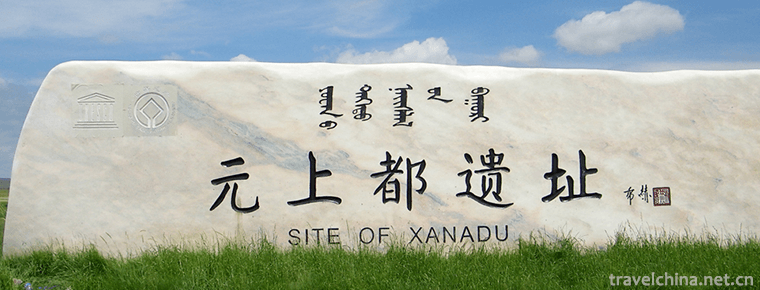
-
Thousand Islet Lake Qiandaohu Scenic Area
Qiandaohu Scenic Area, also known as Xin'anjiang Reservoir, is located in Chun'an County, Hangzhou City, Zhejiang Province..
Views: 190 Time 2018-12-07 -
Chengdu Shangri La Hotel
Chengdu Shangri-La Hotel belongs to Shangri-La Hotel Group. It was officially completed and put into use on May 20, 2007. The hotel is located at No. 9 Binjiang East Road, Chengdu City.
Views: 158 Time 2018-12-16 -
Beijing Ocean Hall
Beijing Ocean Hall, located on the North Bank of Changhe River in Beijing Zoo, is adjacent to Beijing Exhibition Hall, Astronomical Museum and Capital Stadium in the south. It covers an area of 120,00.
Views: 112 Time 2018-12-26 -
Baimaiquan Park
Baimaiquan Scenic Area, located at No. 2017 Huiquan Road, Zhangqiu District, Jinan City, Shandong Province, is located in the eastern part of Jinan City. Founded in 1986.
Views: 147 Time 2019-01-02 -
The Construction Skills of Hui School Traditional Dwellings
The construction techniques of Hui traditional dwellings are the traditional wood structure construction techniques with rich local characteristics. The legend of woodworking techniques is written bet.
Views: 346 Time 2019-05-04 -
Hakka ancient prose
As early as the late Ming Dynasty and early Qing Dynasty, Hakka ancient prose had been formed, mainly distributed in Gongjiang Town, Xinpi Township, Kuanta Township, Zishan Town, .
Views: 157 Time 2019-05-09 -
Laoshan Folk Stories
Laoshan folk tales, commonly known as Lagua, are oral literature created by the local people of Laoshan Mountain in Shandong Province for thousands of years. There were few written records before libe.
Views: 115 Time 2019-05-11 -
Lodgeroye and Zaszai
Lodgeroye and Zaszai is a representative long poem of Hani poetry style, which is widely spread in all villages inhabited by Hani Biyo people in Hani Autonomous County of Mojiang. There are ten chapte.
Views: 168 Time 2019-05-15 -
Traditional Brewing Techniques of Brewing Wine
Chrysanthemum wine is a necessary drink for Chongyang Festival. It has a long history of brewing. Royal chrysanthemum liquor of Ming and Qing Dynasties was a kind of precious liquor created on the bas.
Views: 140 Time 2019-06-09 -
Changsha Tanci
Changsha Tanci is a traditional opera in Hunan Province. It is popular in Changsha, Yiyang, Xiangtan, Zhuzhou and Liuyang of Hunan Xiangjiang River and Zishui River basin. Changsha Tanci derives from .
Views: 260 Time 2019-07-25 -
Hydrology in Yibin
The water system in Yibin belongs to the external water system, with the Yangtze River as the main vein, with many rivers, high density and abundant water. Jinsha River and Minjiang River join to form the Yangtze River, which runs through the nor.
Views: 323 Time 2020-12-18 -
Yibin transportation
Yibin is a transportation hub city in South Sichuan, which is famous for its comprehensive three-dimensional transportation network of water, land and air. It is located at the starting point of the golden waterway of the Yangtze River and the strategic point of Sichuan Yunna.
Views: 119 Time 2020-12-18
